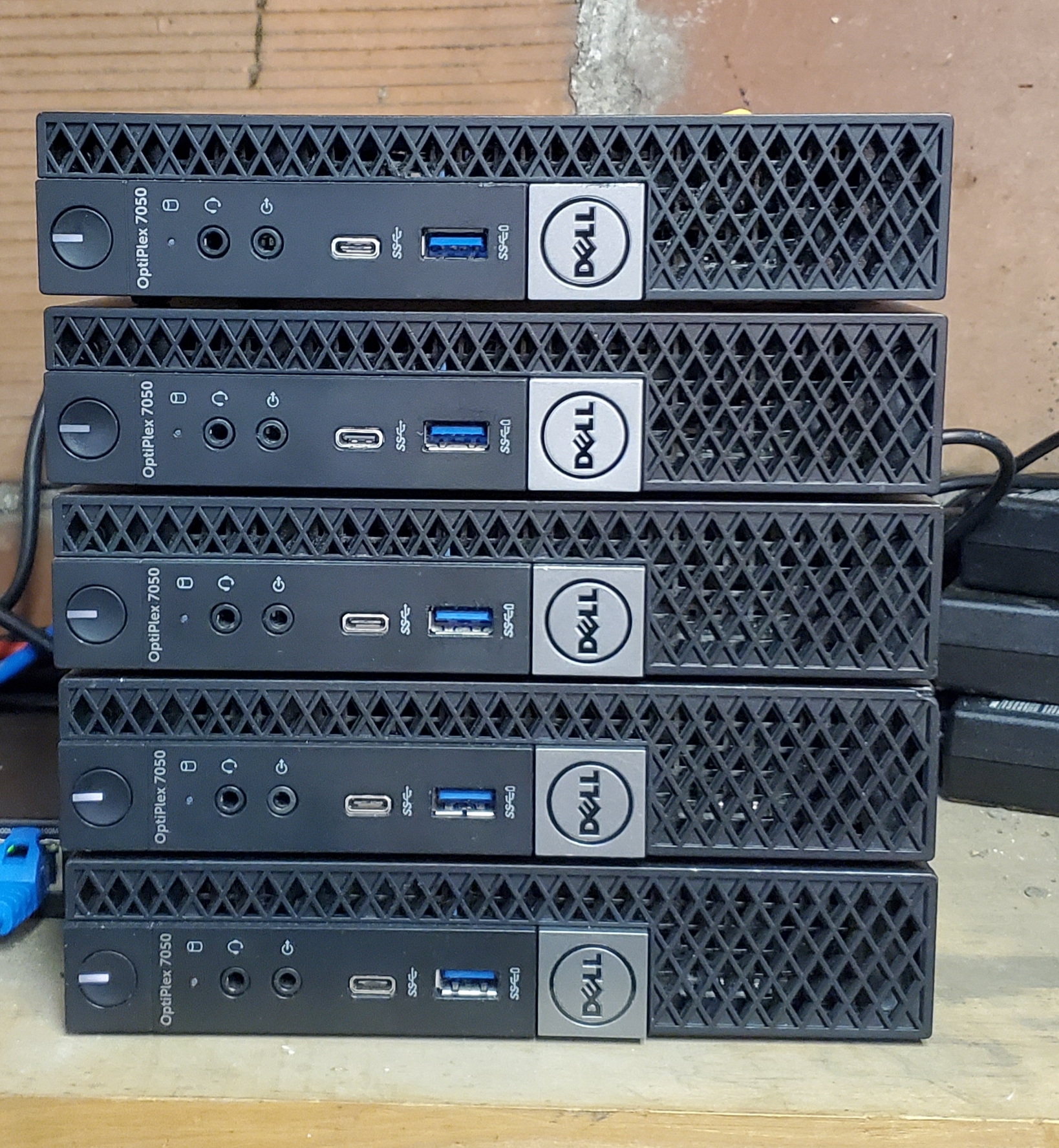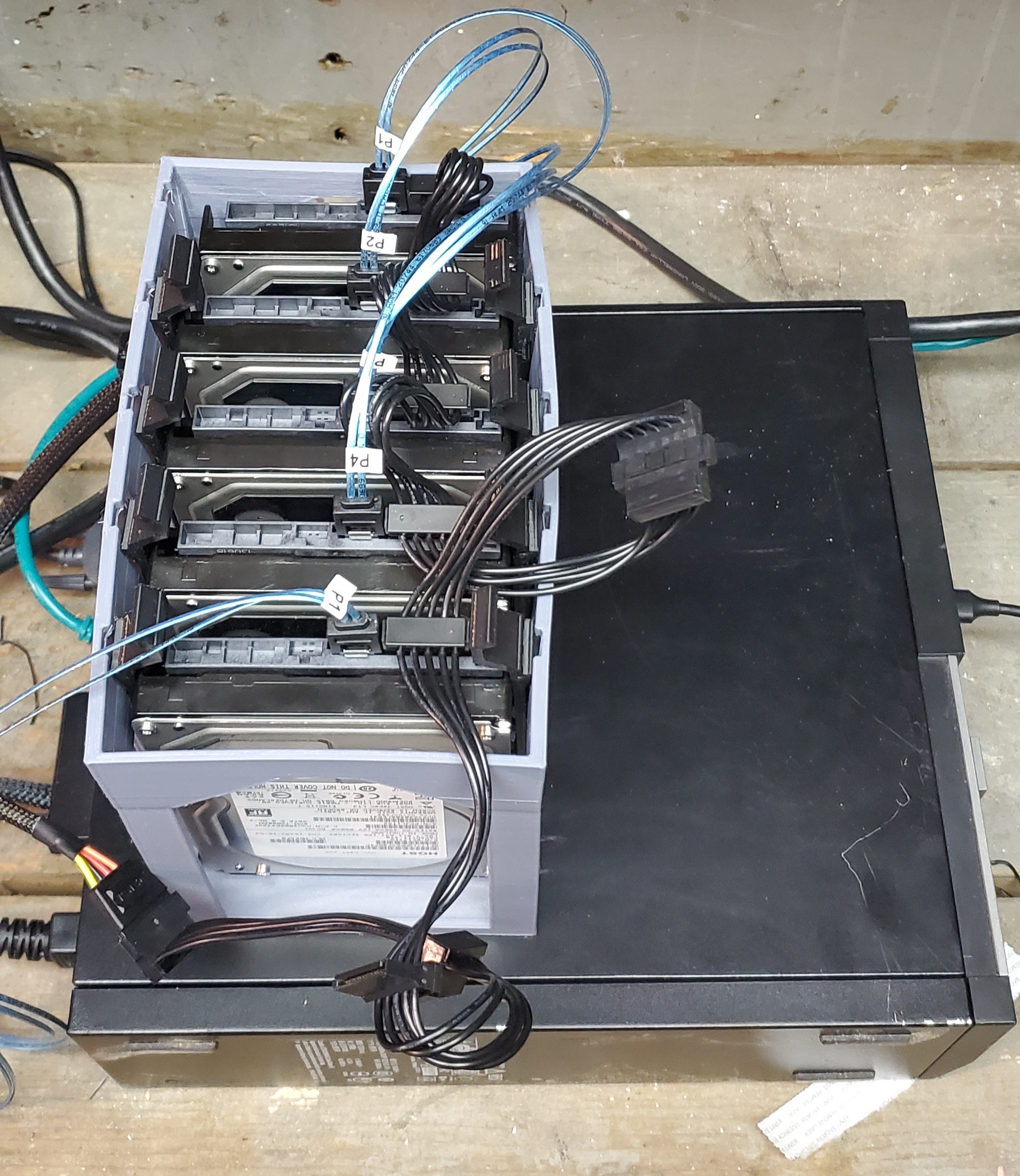I started writing this sometime back in August but never got around to finishing this post until a few coworkers started asking about my homelab to build their own. So I figured I could kill a couple birds with a few stones, help them out and finally start putting something interesting on this site.
I’ve been a homelabber since middle school, initially using old laptops and netbooks that people were throwing out. At one point I think I had a stack of 6 laptops piled up in my basement running various flavors of Ubuntu or Centos. Eventually in highschool after I got my first job as a sysadmin intern I bought a Dell R410 with a pair of old Xeon’s and 48GB of ECC RAM (a reasonably impressive feat to have in your basement at the time). I ran VMware ESXi on the R410 and set it up to somewhat emulate the data center we ran at my job. I used what I learned from that set up to get my next 2 internships and eventually my first full time job. I still have the R410 around but I don’t fire it up often since my mom isn’t paying for the power bill anymore.
High Level Overview
My homelab at this current moment consists of:
- A HP T620 plus thin client running PFsense
- A cheap semi managed 8 port TP-Link switch
- 5 micro form factor Dell Optiplex 7050’s
- An old Dell Optiplex 390 running Truenas Scale
My main goals with this set up are:
- Be quiet
- Be cheap
- Use as little power as possible
Networking
HP T620 plus
This was one of my first purchases for the lab. In the past on my R410 I just ran PFsense in a VM to handle routing and separating my lab subnet from the rest of my LAN. However this time I wanted to put it between my WAN and LAN so I could use it to protect my LAN and run ad blocking tools on it. I bought this off of eBay along with a cheap Intel 4 port NIC card to put in it. This has a pretty old AMD Jaguar processor in it but it supports the AES-IN instruction set so it handles most crypto operations pretty well and so far hasn’t been a bottleneck.
TP-Link TL-SG108E
I don’t have a ton to say about this switch. It was cheap, low power, and supports link aggregation. It did happen to default to an IP already in use on my lab subnet when I initially got it. That was a little bit of a head scratcher to figure out. But otherwise its been pretty solid since.
Compute
Dell 7050 Micro’s
I’ve been reading ServeTheHome’s TinyMinyMicro series for a while which is where I got the idea to use micro form factor PC’s. After looking around on eBay for a few weeks it seemed like the Dell 7050’s were the best bang for the buck, and I thought they looked the best too. I snagged all of them from eBay as well, I bought one and then found a lot of 4 for sale for a steal. The lot of 4 also conveniently happened to be in Des Moines, so I bought them and emailed the recycling company to see if I could just go pick them up, which they agreed to.
They came in various builds, some with no drives, some with no RAM, some Intel 6600T’s, 7600T’s and one 7600 (non T). I had a couple older SSD’s lying around I threw in and ordered a couple Samsung NVME drives for the others as well as enough RAM to bring them all up to at least 16GB.
I use four of the five 7050’s to run a Kubernetes cluster, which I’ll get into later on in this post. The fifth one I kitted out with a 1TB NVME drive and 32GB of RAM to run Proxmox on. I use this to host various VM’s and to try out Proxmox since the only other hypervisor I’ve had experience with is ESX.
These machines idle anywhere between 9-15w and are usually inaudible. These plus my networking gear draws ~100w which is not bad in my book.

Storage
Dell 390
I had an old Dell Optiplex 390 laying around that my previous job was getting rid of. It’s got an i5-2500 and 32GB of RAM and an old 240GB SSD for the boot drive. It’s also got an LSI 9207 HBA card in it which has 2 SAS ports, I split those SAS ports out into 8 SATA ports which I use to hook up 5 used HGST Ultrastar 7K4000 4TB hard drives I got off eBay. A few of the drives I bought were DOA, which I expected with buying used hard drives from eBay, though the seller promptly sent me some replacements. I also have 2 SATA power extension cords running out the back of an empty PCI slot to power the drives. Which sit in 3D printed caddies inside a 3D printed drive cage. This works pretty well except it looks very janky and the drives get warm enough to warp the drive cage.
It runs TrueNas Scale, which has so far worked out pretty well. I’ve got the drives in a RAIDZ2 configuration. Since I expect these used drives to die at any moment I figured being able to tank 2 simultaneous drive failures would probably be a good idea. I’ve got TrueNas exposing a NFS share for Kubernetes to use, and I’m also using the built in Minio functionality to have some S3 like object storage.

Kubernetes
One of the biggest drivers behind this lab was to get a much deeper familiarity with Kubernetes. I was already fairly proficient in my knowledge of Kubernetes from my current job, having written some applications and operators that run in our clusters. But I wanted to get a more hands on feel and break things without interrupting the other guys at work.
I spent a lot of time looking into how I was going to initially provision my machines, most solutions were pretty heavy and cumbersome. I eventually found Khue’s homelab repo which just spins up a container to handle PXE booting the machines and then uses ansible for the rest. I liked how his repo was laid out and setup so I forked it and used it as the base of my cluster as well.
-
It uses ArgoCD applicationsets and watches the repo for any changes, when it detects a change it attempts to reconcile the cluster to match the repo. This gitops approach has worked out pretty well so far, however secrets management and the occasional prometheus custom resource being too large has made some changes more manual than automated.
-
Longhorn for distributed storage has been decent. Reads are more or less at disk speed, while writes are somewhat slow since it has to wait for a write ack from the other nodes it’s replicating the volume to. I primarily use this for smaller volumes (1-10GB), I noticed with larger volumes like 20GB+, reconstructing volumes on other nodes can take a long time and this can cause a bit of a cascading failure since it uses up a lot of bandwidth.
-
TrueNas serves up a NFS store which I use the democratic-csi to drive. I primarily use this for larger volumes like metrics, logging and media. On the TrueNas side I’ve got it configured to use ZSTD as the compression algorithm, which can sometimes get me a compression ratio of 2.60+, pretty incredible.
-
I use Prometheus, Loki and Grafana for your pretty standard metrics, logging and observability stack. So far I’ve been a huge fan of all three, its been very simple to get metrics and logs out of pretty much everything I’ve needed. So far my volume of metrics and logs has been small enough to handle without having to use something like Thanos or Mimir, but I’ll probably mess with them in the future regardless.
-
Gitea as my internally hosted git server. I’m a big fan of Gitea and they are always adding great features to it. It integrates well with Drone and has been rock solid so far.
-
Drone handles CI and building of my personal repos and in my experience so far has been incredibly fast at builds. I initially used Tekton which has a large learning curve and is very configuration heavy. Drone on the other hand has been essentially plug and play with Gitea and k8s. It is a bit limited feature wise but I really only need it to handle builds for now.
-
Trow is my internal docker registry. It works pretty well, but currently is feature limited. I’d like to publicly host some images but I’ll need something with better permissioning (which trow totally lacks) and some way to limit bandwidth usage.
For a more in depth look at my cluster you can check out my repo. The readme shows most of the things I run in it.
The Future
At some point I’d like to get a 10GBE switch for the lab. The prices on those have dropped a lot in recent years and MikroTik offers some pretty nice 8 port SFT+ switches for < $300. The 7050’s however can’t handle 10GBE, but the USBC 3.1 ports on the front can handle 2.5GBE dongles, which would still be a 150% increase.
I may at some point also put Proxmox on all the 7050’s and cluster them together and run Kubernetes on VM’s. That way I have a little more flexibility in doling out compute resources. That would also allow me to use an immutable OS so any OS level changes I need to make I don’t have to make a ansible playbook to apply to all nodes, I can just build a new image and cycle them.